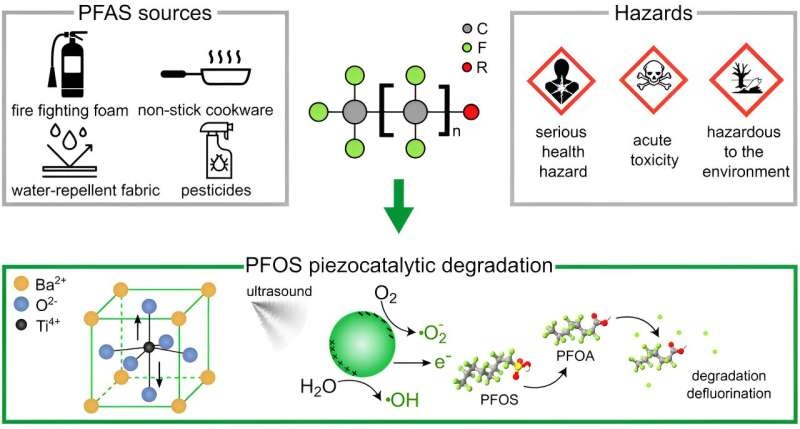Learn how the researchers are breaking down PFAS, those intractable pollutants that have been choking our planet for decades using amazing piezocatalysis. Such an innovative strategy may give us the upper hand in the battle against these ‘forever chemicals.

Piezo Power: Cracking the Code of PFAS Decomposition
That is because PFAS, or per- and polyfluoroalkyl substances — are very persistent. These highly stable, carbon-fluorochemical molecules are the backbone of a wide array of human-made chemicals and have been included in everything from firefighting foam to non-stick cookware.
But scientists from ETH Zurich have designed a strategy that might eventually end the era of ‘forever chemicals’. Thanks to piezocatalysis and PFOS (perfluorooctane sulfonates), a very deadly subset of PFASs, they discovered how to disrupt them.
This discovery hinges on the use of piezoelectric nanoparticles. The particles generate electricity when stressed mechanically, e.g. by the vibrations in an ultrasonic bath, which helps to break down the PFOS into smaller molecules. The use of this new strategy had encouraging results, which led to the development where scientists were able to break down as much as 90.5% of PFOS in their lab experiments.
Tackling the PFAS Conundrum
Because PFAS are a worldwide problem with significant environmental and health impacts. These chemicals are persistent, non-biodegradable compounds that have accumulated in soil, water and even in our bodies.
PFAS are so harmful, in fact, the EPA has deemed them an “emerging contaminant,” as they can cause harm to liver function, interfere with hormone levels and even lead to cancer. Current methods to degrade these compounds are largely inefficient, not energy-efficient; thus piezocatalysis offers a viable solution that could remedy this problem.
These are much better than other techniques that either require temperatures above 1,000°C, as is the case of thermal decomposition, or suffer from efficiency loss during wastewater degradation due to close system interaction with ozone concentration and temperature such as photocatalysis. The method relies on the energy naturally available in water, such as that created by turbulence in wastewater treatment plants, to break down these pollutants without requiring additional energy.
The researchers also show that their method is not specific to PFOS but can be used with various PFAS and other micropollutants as well. This flexibility could make piezocatalysis a useful weapon in the ultimately battle against these stubborn pollutants.
Naturally there are still kinks to be ironed out, like the method being able to be engineered at the industrial level. However, the promise of this new strategy is evident and it can largely contribute to a cleaner and safer world.
Conclusion
Piezocatalysis will be a more practical approach to solving the PFAS problem against which the elusive “forever chemicals” have wreaked havoc and, perhaps soon, enough with our world. Utilizing piezoelectric nanoparticles, researchers have learned to decompose these stubborn pollutants and open the door for a cleaner generation. This is a highly innovative method that shows a lot of promise, but there are still issues to be worked out when it comes to scaling up and implementing the process so what in the future might revolutionise our battle with PFAS.
